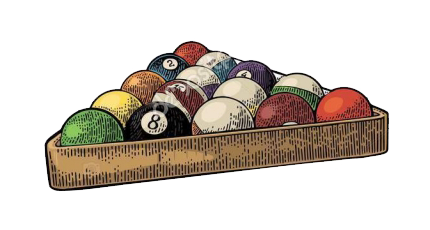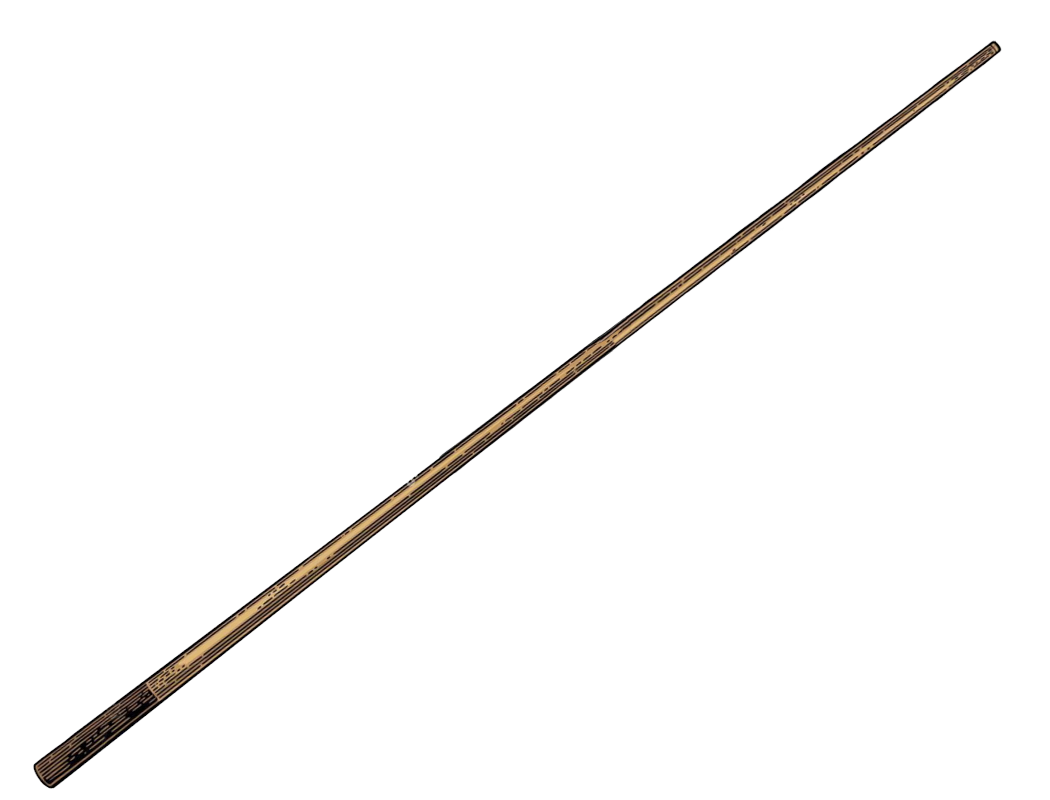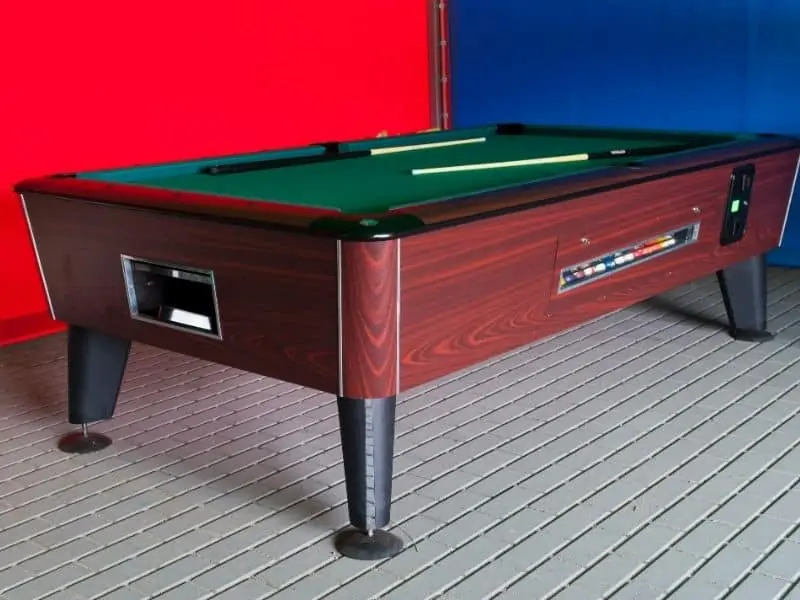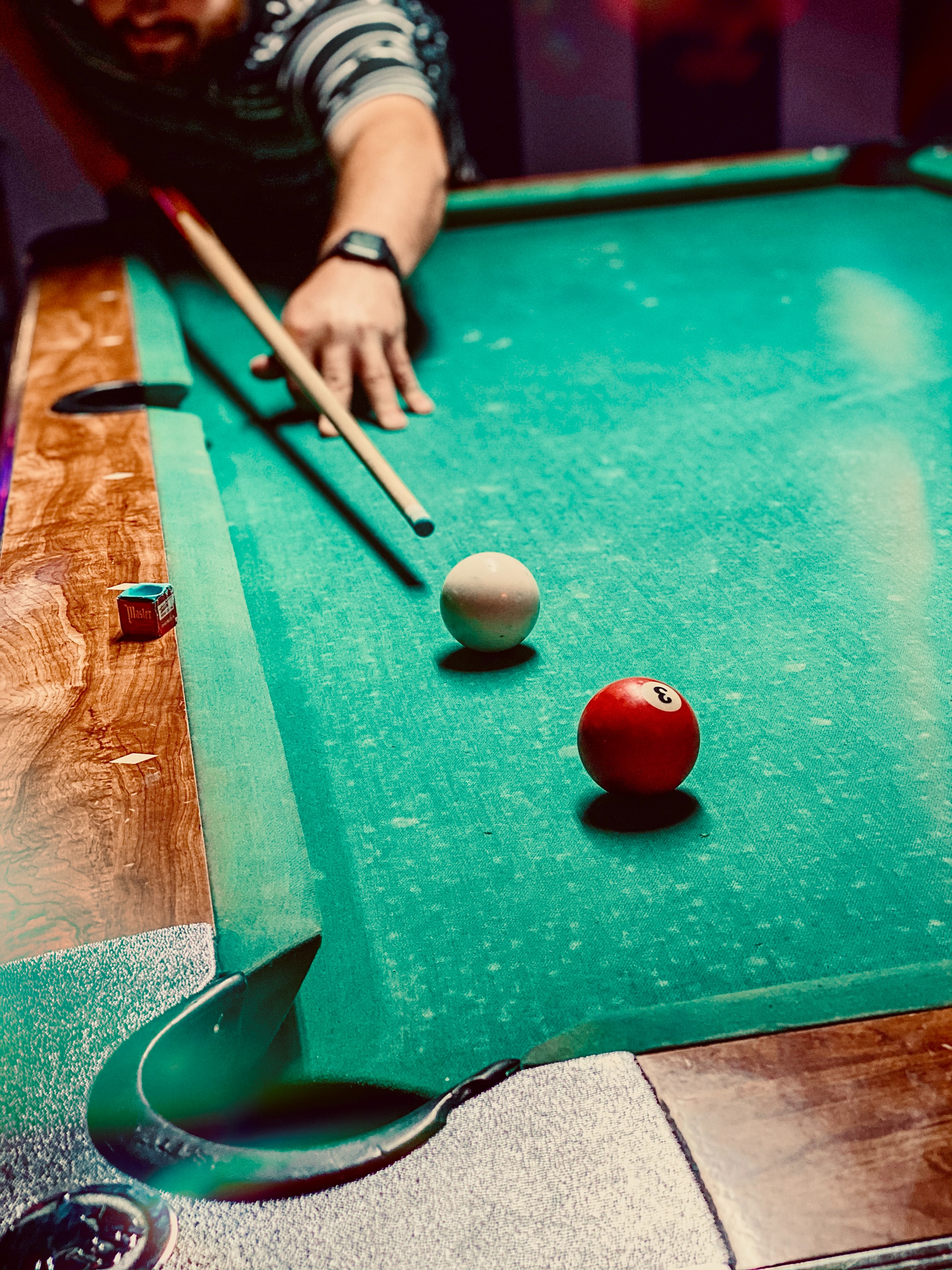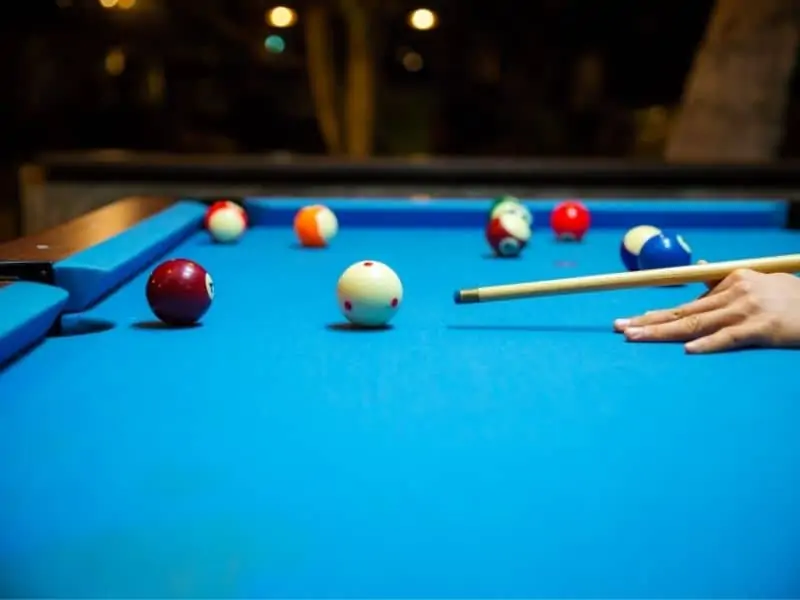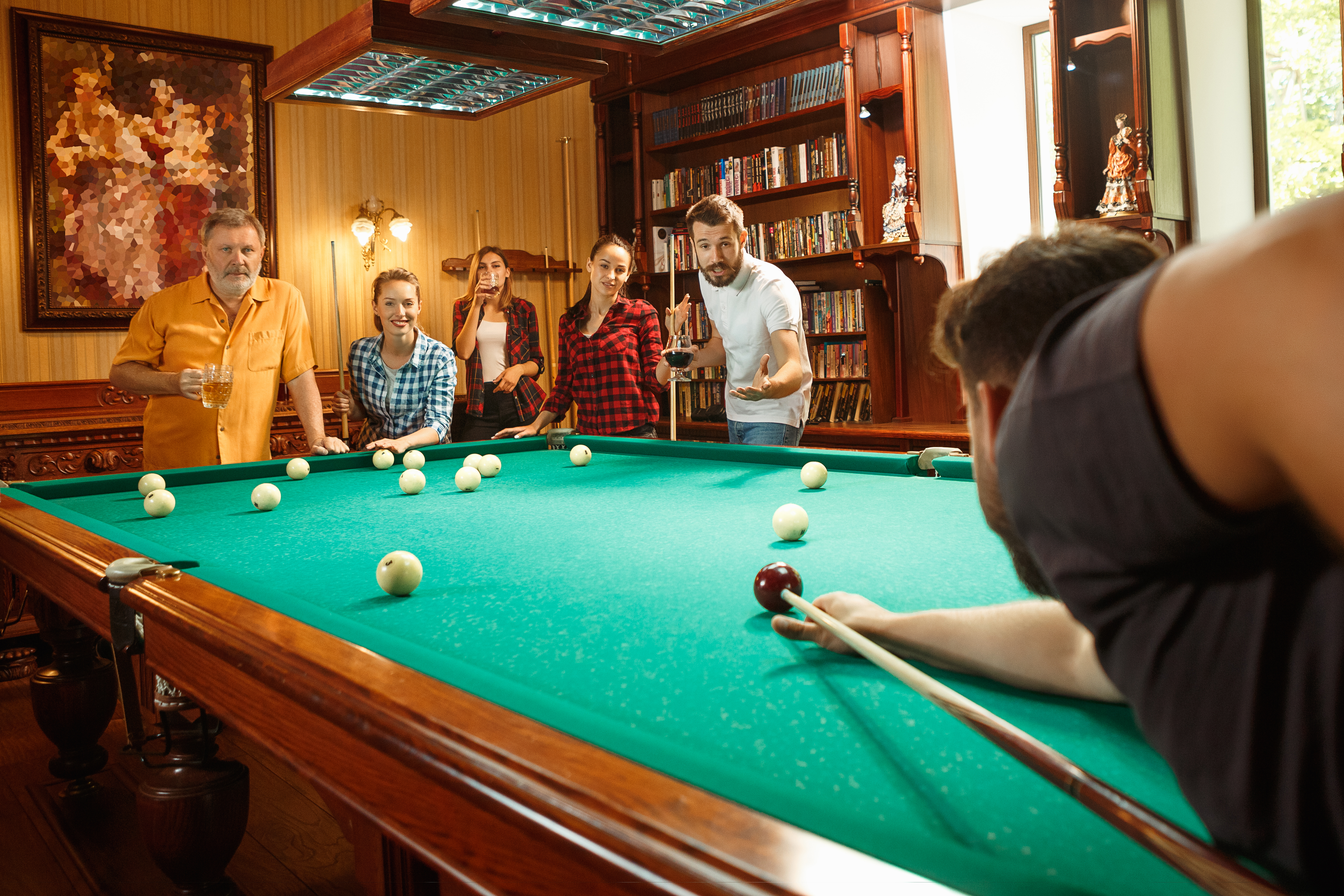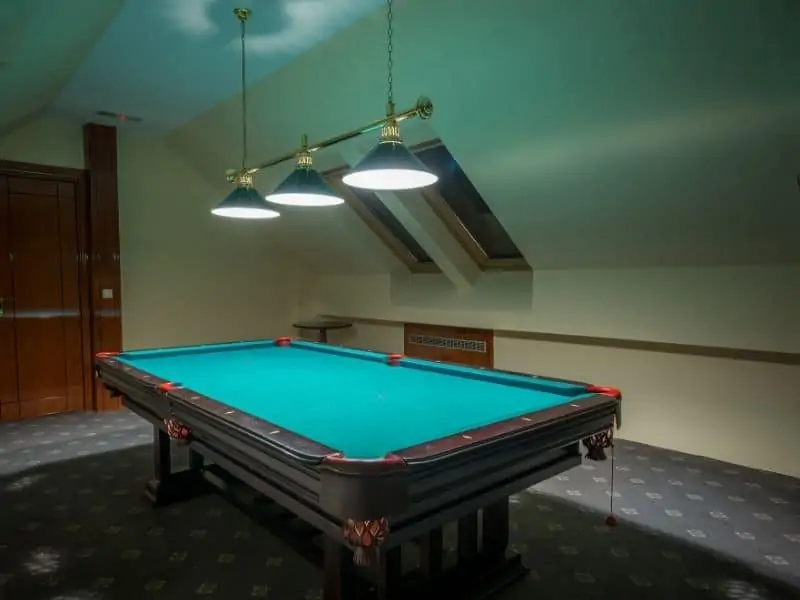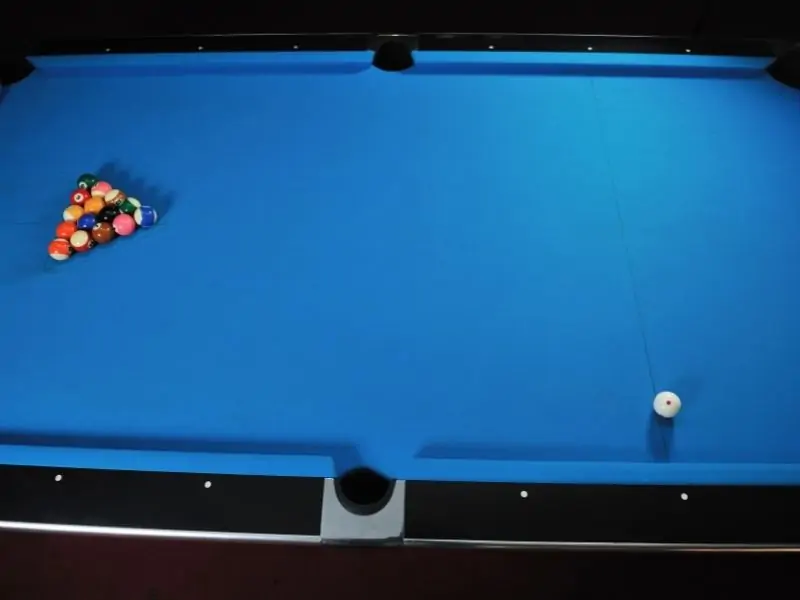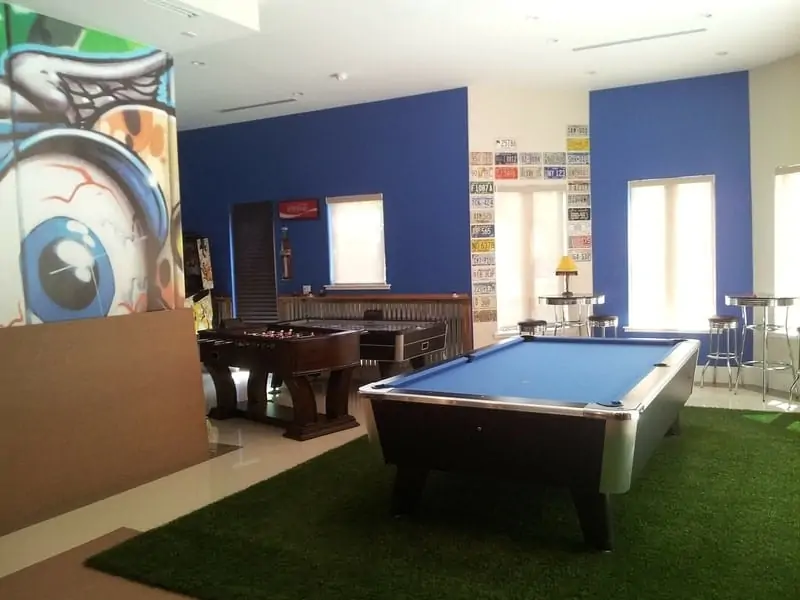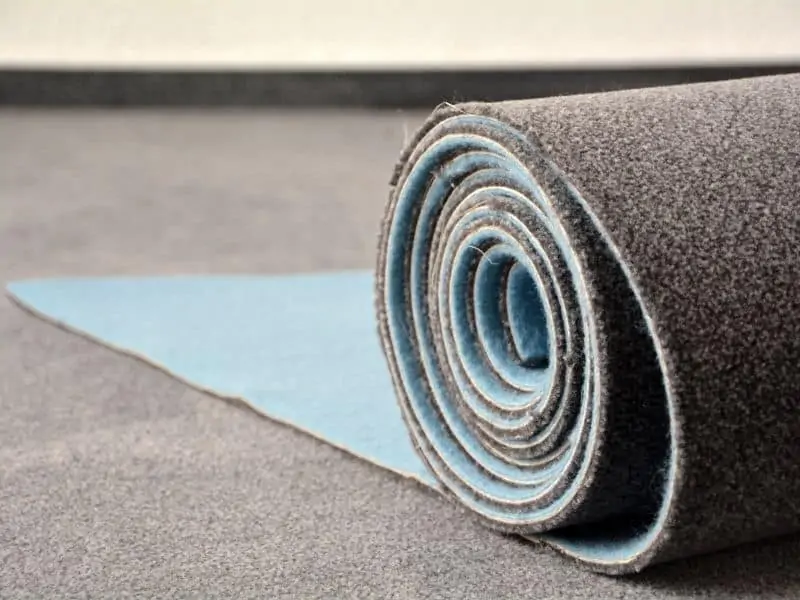If you’re fairly new to the world of pool, or simply haven’t paid much attention to the tables you’ve played on, it can be hard to tell what material a pool table’s surface is. After all, it’s covered in cloth (or felt, as some call it), so you can’t get a good look at it. But there are other easy ways to tell what type of material is used on any given pool table.
In short, it comes down to the feel of play and the table’s construction, weight, and cost. On many tables, you can also reach into a pocket or look under the table to see if it’s slate or wood.
Slate vs Wood
Before we get into details, it’s good to know exactly what you’re dealing with when it comes to pool tables. Slate is the most widely-used material for pool table playing surfaces. This is because it’s a type of rock, cut with precision to be flat and smooth. It’s usually ¾” or 1” thick, depending on the size and age of the table. Most tables today are made with 3 pieces of slate cut from the same large piece.
The most common wood playing surface available in pool tables is MDF or Medium-Density Fiberboard. It is made up of small, compressed wood fibers that are sealed into a flat piece for use as pool table playing surfaces.
Telling the Difference Between Slate and Wood By Sight and Touch
Many pool tablesare built with the underside of the playing surface somewhat exposed. You can get down on your hands and knees to look at the underside of the table. Slate is generally light or dark gray in color, whereas MDF usually has a pale brown tint to it. You can also reach up and touch the underside of the playing surface to be sure. Slate will be cool and hard to the touch. MDF will feel like what it is, a smooth wooden board.
If you’re still not sure which it is, grab something metal like a coin, tack, or nail. Tap it gently on the exposed underside. The sound it makes should tell you whether it’s MDF or slate. It will be the sound of metal on rock for slate and metal on wood for MDF.
However, be careful with this method because some tables are made with an MDF backing under the slate. So, you could be feeling MDF on the underside while there is slate above it that you can’t see because it’s covered in felt. This is why it’s a good idea to combine this tactic with testing the weight of the table, which I discuss below.
If you don’t feel like getting down on all fours to check the table, you may be able to feel inside a pocket. Some pool tables are constructed so you can reach inside any of the pockets and feel past the edge of the cloth on the playing surface. If yours is one such table, you should be able to feel whether your fingers are touching cool, hard stone or dense wood.
Cost of the Table

Cost is another great indication as to whether a pool table is slate or wood. Slate tables are considerably more expensive than wood ones. A decent slate table will cost somewhere between $1,800 and $3,000 brand new. They only get more expensive from there.
MDF tables, on the other hand, range from $700 to $1500 for a quality table. You can find them for under $500 if you’re willing to sacrifice a little quality.
However, if you’re **buying a used pool table**, cost should only be one of the factors you look at. Always verify that the table is slate before you buy it, to be on the safe side.
Weight of the Table
As you can probably imagine, slate tables are very heavy. Not only does the slate weigh a lot (450 pounds, on average), but the rest of the table weighs a lot, too. This is because a slate table must be constructed to support the weight of the heavy slate bed. This is typically done with a heavy-duty wood frame and large legs. Then you have to think about the cushions, sides, pockets, and any decorative additions that make the table look nice. Slate pool tables usually weigh between 650 and 1,000 pounds.
MDF tables, on the other hand, weigh significantly less. The wood board of the playing surface is nowhere near as heavy as that of a slate table. Therefore, the rest of the table, including the frame, doesn’t have to be made to support a lot of weight. MDF tables generally weigh between 100 and 300 pounds.
So, if you’re not sure whether a table is slate or wood, try to lift it up — carefully. If you can get it off the ground easily, it’s MDF. If it seems very heavy, it’s probably a slate bed table.
Is it Portable?
Portability is another factor that has to do with the weight of the table. You will never see a slate bed table that is portable. MDF bed pool tables often have foldable legs and are easy to move since they don’t weigh a ton. Finding out if the table is portable or not will give you a clue to its construction.
The Feel of Play

If you talk to anyone who has been playing pool for a while, they’ll tell you that they can feel the difference between a slate and an MDF table when they play on it. The reason this isn’t at the top of the list is that it’s hard to explain and not everyone can simply feel the difference. But, I’ll do my best to explain how play differs on these two types of tables.
Slate tables are the standard because the balls seem to roll smoothly on their surface. The field of play is more_true_than on a wood table. If you were to place a slate and a wood table side by side and make the exact same shot on each, you’d likely see the difference. It would be small, but noticeable. The amount of power you put into a shot on a slate table seems to make the ball go further than the same amount on a wood table.
In short, playing on a slate table just seems to make everything smoother. I don’t have any scientific evidence to back this up, but if you play pool enough on different tables, you’ll know what I mean.
Other Ways to Tell if a Pool Table is Slate or Wood
Now that we’ve discussed the big ones, here are a few other ways to tell if a pool table is slate or wood. These methods should be combined with one or more of the main tactics outlined above.
Construction
The construction of a table can tell you a lot about whether it’s slate or wood. Slate tables have sturdy, ornate construction and are built to last. They’re almost always made with high-quality wood. MDF tables are often made with some type of plastic, thin metal, or particleboard. While slate tables look incredibly sturdy (because they are), MDF tables look a bit flimsy.
Features
Although not a hard and fast rule, how many features the table has can be a sign. Slate pool tables are made to sit in one spot for years and they are meant for one thing and one thing only: billiards. MDF pool tables often have several features. You can turn them into a ping pong table, or change them out for any number of other games.
While these kinds of tables are great if that’s what you’re looking for, they are almost never made with slate and are designed for casual play with a lifetime of no more than a few years. Slate bed pool tables, on the other hand, have been known to last for 25 years or more when cared for properly.
Maintenance and Longevity Considerations
Beyond the initial identification, understanding the practical implications of owning a slate versus a wood pool table is important, especially when it comes to maintenance and longevity.
Slate Tables
Durability and Longevity:
Slate pool tables are renowned for their durability. Being made of rock, slate is far less susceptible to warping over time as compared to wood. With proper care, slate tables can last generations. They are considered a long-term investment, often passed down through families.
Maintenance:
Slate tables require less frequent maintenance compared to MDF tables. Due to their flat and hard surface, they maintain a level playing field for a longer time. Re-felting might be needed from time to time, but the slate itself is virtually indestructible under normal playing conditions. However, if it does crack or chip, repairing it can be costly.
Wood (MDF) Tables
Durability and Longevity:
MDF tables, though still a fantastic option for casual play, do not possess the longevity of their slate counterparts. Wood tables, particularly those made of MDF, are more susceptible to warping from environmental conditions like humidity and temperature changes. MDF tables typically have a life expectancy of around 5 to 10 years under regular use.
Maintenance:
MDF tables generally require more regular maintenance. They can warp or become uneven more quickly, requiring adjustments to ensure a level playing surface. They can also be more prone to scratches and dings, which might require more frequent refinishing or replacement of the playing surface.
Environmental Factors:
Wood tables are more sensitive to environmental conditions. For example, placing a wood table in a room with high humidity could lead to warping over time, and extreme temperature changes can affect the table’s playability and longevity.
Financial Consideration for Maintenance
When considering the cost of a pool table, potential buyers should also factor in the cost of maintaining the table. While slate tables have higher upfront costs, their lower maintenance requirements might make them more economical in the long run. On the other hand, MDF tables, although cheaper upfront, may incur more maintenance costs over time, potentially narrowing the price gap. Proper care and maintenance are key to getting the best experience out of your pool table.
In Conclusion
If you know what to look for, telling the difference between a slate and a wood pool table can be done in a matter of minutes. You can check the weight of the table, feel the underside of it, and determine how much it typically sells for. If it’s portable, it’s an MDF table. If it’s heavy, it’s likely slate. If you’re a somewhat experienced player, you may be able to tell just by shooting a few balls. No matter which you prefer, it’s good to know how to tell if a pool table is slate or wood.
Other Articles You May Be Interested In:
Best Pool Cues for the Money: Discover the top pool cues that offer great value without breaking the bank.
Pool Table in the Garage? Here’s What You Need to Know: Understand the essential considerations for setting up a pool table in your garage.
Break Cue vs Playing Cue: What’s the Difference?: Learn the key differences between break cues and playing cues to enhance your game.
How Much Does a Good Pool Cue Cost?: Explore the factors that determine the cost of a high-quality pool cue.
Are Mini Pool Tables Worth It? A Complete Guide: Read our comprehensive guide on mini pool tables and decide if they’re the right fit for you.
